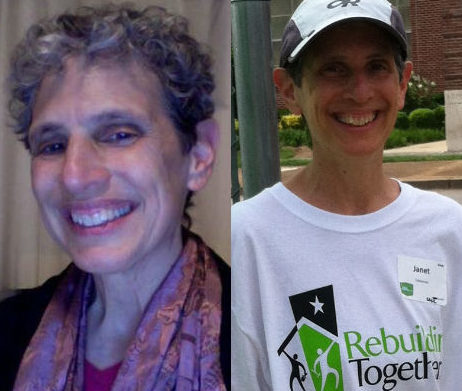“I am a nester,” my friend said just weeks before Pesach, as we pondered the ramifications of her house having been dismantled for mold remediation. Her home is sacred space for her, a place set apart to replenish herself. Normally, she would have been cooking up a storm in her house. Instead, we baked a few things in my kitchen as we had an overdue visit. Now, weeks after the seders she and I shared, I am still housing the heavy electric mixer she used to blend cake batter – a symbol, perhaps, of the weightiness of making do, of making space for something like home even when we are away from home.
Parshat Metzora, one of two parshiyot read this week, addresses the circumstances under which a house should be vacated and destroyed because of a nega tzaraat, a mark or plague on the walls (VaYikra 14:34). The Torah assumes the nega tzaraat may represent a spiritual impurity that needs to be ritually cleansed, even if the occupants did not cause it. The steps that should be taken to remediate or destroy the house are described. But the story of the occupants forced to leave the place that has become their home, a sanctuary, perhaps, from weather, war, or the challenges of daily life – that is not described here.
I am struck by how basic, how essentially human, the desire is to have a safe place to call home, and yet how illusive it can be, how fragile.
Safe, healthy and adequate housing is as basic a human right as food and water. Yet millions of people are forced from their homes every year, temporarily or permanently, due to circumstances beyond their control. One stunning example is South Sudan, where civil unrest and flooding resulted in 1.25 million people being displaced from their homes in-country in 2013, with another 508,000 now residing elsewhere as refugees.
When Jews fled Europe to escape the Shoah, many found refuge in the ancestral homeland that became the State of Israel. But as a result, thousands of Palestinians were forced to flee the homes their families had occupied for generations, with effects continuing into the present. A recent ruling by the Israeli Supreme Court affirmed—though with reservations—the government’s ability to seize Jerusalem properties of Palestinians currently living elsewhere, including in the West Bank or Gaza. The full ramifications of this decision are still unknown, but the common human desire for connection to an historic home is clear, as is the intricate and often tangled web that connects us.
The nega tzaraat may point to something very basic about our relationships, with each other and with God. The Torah describes the nega tzaraat on people’s bodies and clothing as well as houses. The Baal HaTurim indicates that these types of nega are particularly linked to the ten commandments, as they appear ten times in Parshiyot Tazria and Metzora (comment on VaYikra 14:2). While our house often represents home, our clothing frequently signals identity. They can say something about our most private and most public selves. Perhaps the nega tzaraat on houses can represent the social ills that force people from their homes, while the nega tzaraat on clothes can serve as a symbolic reminder of how we, as individuals and a society, want to respond.
I think of my friend’s mixer now sitting on the bench in my dining room. It is weighty, substantial. It’s a symbol of our sacred relationship, as friends of course, but also as human beings. It reminds me of my desire for every house to be a home, every home to be a sanctuary. It reminds me that God is sometimes called HaMakom, The Place, and can be found in every place.
Every refugee camp. Every house. Every home.
Rabbi Shifrah Tobacman is a spiritual leader and teacher living in Emeryville, California. She is the author of Omer/Teshuvah: 49 Poetic Meditations for Counting the Omer or Turning Toward a New Year. Rabbi Shifrah received smicha in January from the Aleph Rabbinic Ordination Program. She earns her parnassa in the field of public health, where one of her specialties is the issue of health and housing.

